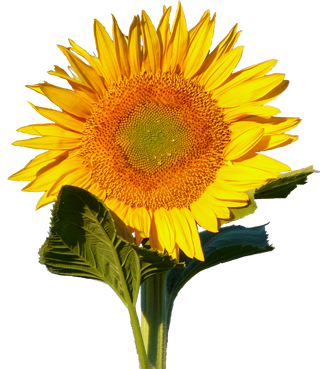
Garden and Plate
The Molecular Biology of Nutrition
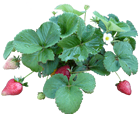







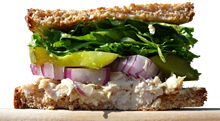

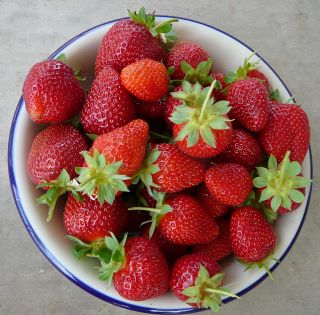
There are many different varieties of strawberries to choose from, but I've always grown Sequoia strawberries. They've produced lots of delicious strawberries every year, so I've never tried any other type.
I used to purchase the plants in pony packs, which are available in the nurseries in late October or early November. Now I buy bare-root strawberry "starts" instead, since they work just as well at less than half the cost. The only place I've found the starts locally is Baker's nursery. For some reason, they don't sell the starts until late November, even though the pony-packs are available a few weeks earlier. The starts look like sticks with roots (that must be kept moist), and don't look nearly as good as the plants in the pony-packs. The pony-pack plants, however, were starts before they were placed into pony-packs, and will look just as good as the pony-pack plants a week or two after you plant them.
The strawberry plants establish themselves and grow larger throughout the winter. During this time they produce lots of leaves, but no berries. They do well in cold weather, but may lose their leaves (or so I'm told) in a hard freeze. My plants have always made it through the freezes with their leaves intact. The plants start producing ripe berries in early April, and will continuouly produce them until the summer heat ends berry production sometime in June. You get a steady supply of ripe berries for about two months.
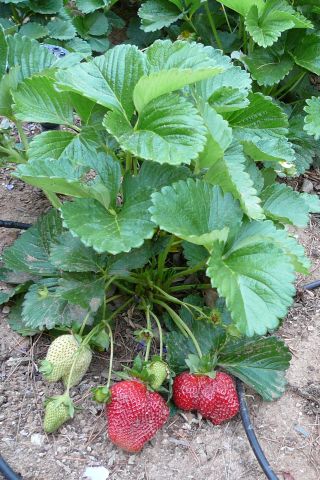
Sequoia strawberry plants are perennials, so they should last many years. My personal experience has been mixed. They like to be in the sun, but the summer sun in Phoenix is too much of a good thing. The first couple of years I planted them in spots that get the afternoon sun, and most of the plants died. I tried covering them with shadescreen in the summer months, but that didn't help. The plants that survived didn't do as well the next year as the new plants I placed next to them.
Now I plant them where they get morning sun and afternoon shade, on the east side of a wall. I've had better results at the new location, but the plants still get signficant leaf damage in the summer months. If they survive the summer they'll come back strong in the fall.
Strawberries have small seeds on their surface, but I've never heard of anyone growing the plants from seed. The plants send out runners that produce their own roots. Once established, you can cut the runner and have a new independent plant. If you can get the plants through the summer, you should never have to buy another strawberry plant again.
Strawberry plants get their name from the straw that people put under the plants to raise the berries up off the soil. I don't use straw, but I sometimes set a ripening berry on top of a low-lying strawberry leaf, which works quite well. Strawberries will develop rotten spots when they rest on moist soil. I use a drip system, which delivers water to the base of each plant in a slow drip, so the water will sink into the ground rather than spread out. Their roots tend to go deep, rather than spread out, so drip-watering at the base of the plant has worked well for me.
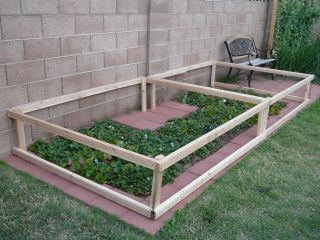
Strawberry plants like soil that drains well, so I mix sand into my soil before planting a new strawberry patch. Between the sandy soil, the drip system, and planting them in a sunny spot, my surface soil stays dry most of the time.
Birds love strawberries, so you'll have to cover them with something if you want to let them ripen on the plant. You can pick them before they are fully ripe, but then they don't taste as good (that's why store-bought strawberries have less flavor). I use bird net to keep the birds away. The easiest way to use the bird net is to create a wood frame over the strawberry patch and attach the bird net to the frame. Strawberries are short plants, so the frame only has to be about a foot high. I made mine 18 inches just to be sure. I just tip the frame forward (away from the wall) when I want to pick 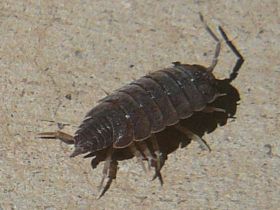 berries.
berries.
The biggest pests, though, are the pill bugs. They like to eat big holes in the berries, causing them to rot. The pill bugs use gills to breathe, so they need moist places to live. They can't breathe unless they are kept moist. The best defense against pill bugs (and slugs) is to keep your soil surface dry.
Ants are only a problem if the birds or pill bugs get there first. Ants will invade holes in the strawberries skin, but seldom bother an intact strawberry, even when it's ripe.

Strawberries start out as small white flowers with yellow centers. The white petals attract pollinating insects.
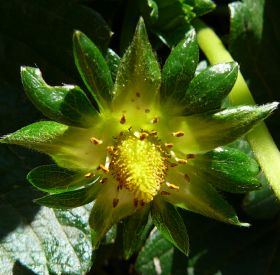
Once pollinated, the flower transforms itself into fruit. The white flower petals fall off, and the yellow center becomes a strawberry.
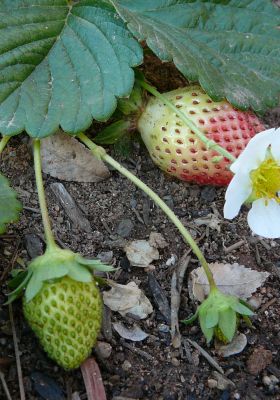
The strawberry grows in size and starts to ripen. Although small seeds form on the surface of the berry, the plant usually spreads by sending out runners.

The strawberry takes on a red color as it ripens. Birds and other animals are attracted by the color, and spread the seeds when they eat the berries. Strawberry seeds are viable, but most gardeners either buy small plants, or let their existing plants send out runners if they want more plants.